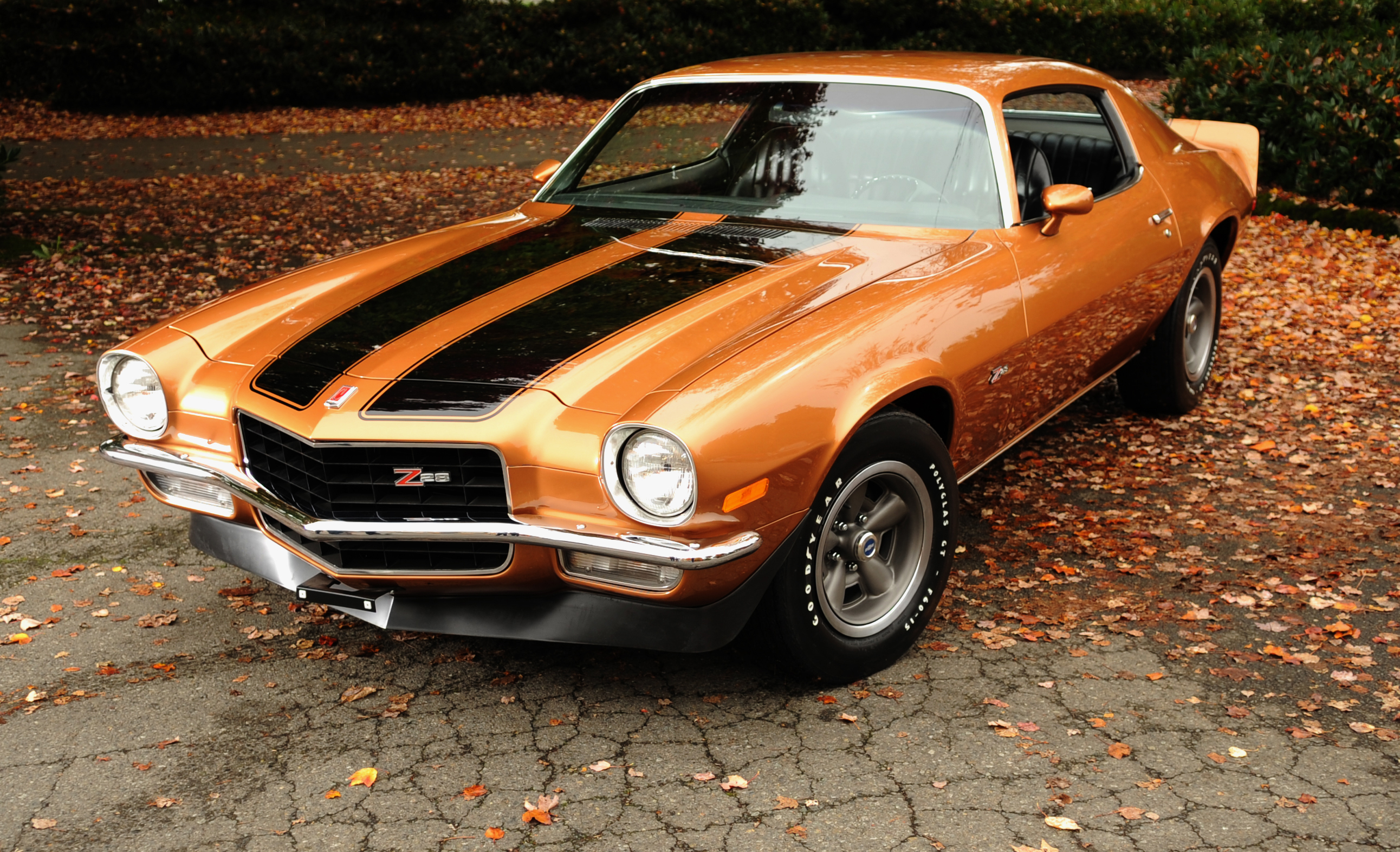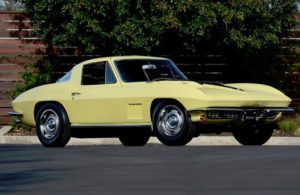It’s the 70s that are remembered for lethargic vehicles, sapped by the onset of emission constraints. Certainly the horsepower bubble burst in the 70s. However, regulatory pressures were mounting well before the days of disco. Furthermore, automotive legislation went far beyond tailpipe emissions.
In fact, the government began restricting potentially harmful fumes in the mid-60s and scrutiny of vehicle’s safety, noise, and fuel economy eventually followed. In the base model Corvette, horsepower levels fell more than 30% from their 1966 power peak. As if that weren’t enough, an increase in weight accentuated the loss in performance. Indeed, as Stingray engineers parried a constant flow of new government constraints, the aging C3 platform’s power to weight ratios fell nearly 40%.
Huffing and Bluffing
Swimming in smog, California realized emission standards were needed already in 1960 and the Golden State approached Detroit about the practicability of automotive design requirements for the 1966 model year[1]. Despite initially characterizing the plan as daunting,[2] Detroit’s Big Three automakers were ultimately able to meet California’s proposed 1966 emission standards “ . . . solely by engine modifications such as carburetor adjustments, timing changes, and air injection systems.[3]”
The encounter ultimately led the Justice Department to file charges of collusion against the Motor Vehicles Manufacturers Association under antitrust in 1969. [4] But in the meantime, Ralph Nader’s seminal 1965 book ‘Unsafe at Any Speed‘ galvanized an increasingly cynical generation of voters. Spurred in part by this book, in 1968 new vehicle safety requirements followed for whole country. Anchored seats, seatbelts, and safety glass became necessary for passenger cars, as did collapsible steering columns, protective interior cushioning, and many other safety provisions.
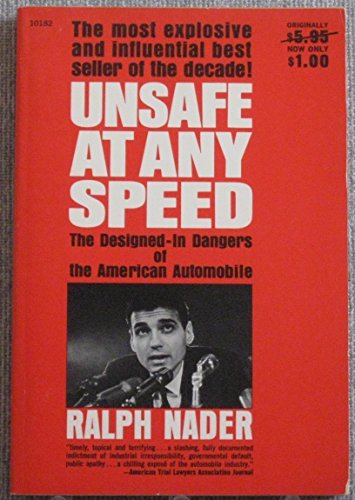
Unsafe at Any Speed, Ralph Nader, Knightsbridge Publishers 1991 (Original Grossman Publishers 1965)
Without a doubt many new requirements saved lives. And it was of comparatively minor consequence that their sudden onset sapped speed faster than innovation could compensate for performance losses. Nevertheless, the timeline below summarizes the litany of legislation that increased weight and restricted horsepower. For example within section I, the red triangles show the intensification of horsepower robbing requirements on account of emissions, noise, or fuel consumption reduction efforts. Similarly the first red triangle – in section II – marks the incremental weight of 1968’s compulsory safety equipment.

1966-MY indicates 1966 Model Year; Energy;PVV indicates Paul Van Valkenburgh from Chevrolet = Racing?; italicized items had significant impacts on power and weight and are therefore co-located
From https://www.edf.org/sites/default/files/CARB_Detailed_Comments_on_SAFE_NPRM.pdf accessed 5/2/2019 ; https://crashstats.nhtsa.dot.gov/Api/Public/ViewPublication/812354 accessed 5/7/2019 ; “Impact Bumpers, Are they really saving money?” Tom Lankard Road & Track Jan 1975 ; Paul Van Valkenburgh from Chevrolet = Racing?; http://chittagongit.com/icon; GAO, NHTSA, EIA, Reagan Library, http://sparebumper.com/federal-bumper-standards/ accessed 5/17/2019, https://www.csmonitor.com/1982/0923/092333.html accessed 5/17/2019, https://www.upi.com/Archives/1981/10/22/Speedometer-rules-slated-for-scrapping/7086372571200/ accessed 5/17/2019, EPA, https://www.fhwa.dot.gov, fred.stlouisfed.org, *Chevrolet Engineer Gib Hostader comment noted by Jerry Burton in his book Zora Arkus-Dontov published by Bentley 2002, and AnotherApex estimates
A School of Hammerheads
California’s patient persistence for a pound of flesh would ultimately pin down the Stingray in the 70s, along with every other new US passenger car. A regulatory frenzy began. Legislators created new chapters of government – the National Highway Traffic Safety Administration and the Environmental Protection Agency – tasked with writing all future editions of Detroit’s rulebooks.
It might appear intentional that Chevrolet delayed releasing its third generation Corvette [inspired by the Mako Shark II] into the increasingly stirring waters of 1967; the extra year perhaps allowing a reskinned fish to better incorporate 1968’s new emissions and safety requirements. However, with a Chevrolet engineering reorganization taking place in early 1967 – shortly after one of Duntov’s many campaigns for a mid-engined Corvette – the C3’s delay seemed to be a byproduct of shifting priorities rather than a calculated plan.[5]
But because national emissions requirements were very similar to those enacted a couple of years prior in California, the new “shark” managed to slide by 1968’s Federal requirements without too much penitence.[6] Indeed, the voluptuous new C3 elegantly hid 1968’s compulsive weight gain tidily within new curves. And powertrain options – though perhaps running hotter – were static compared to 1967.

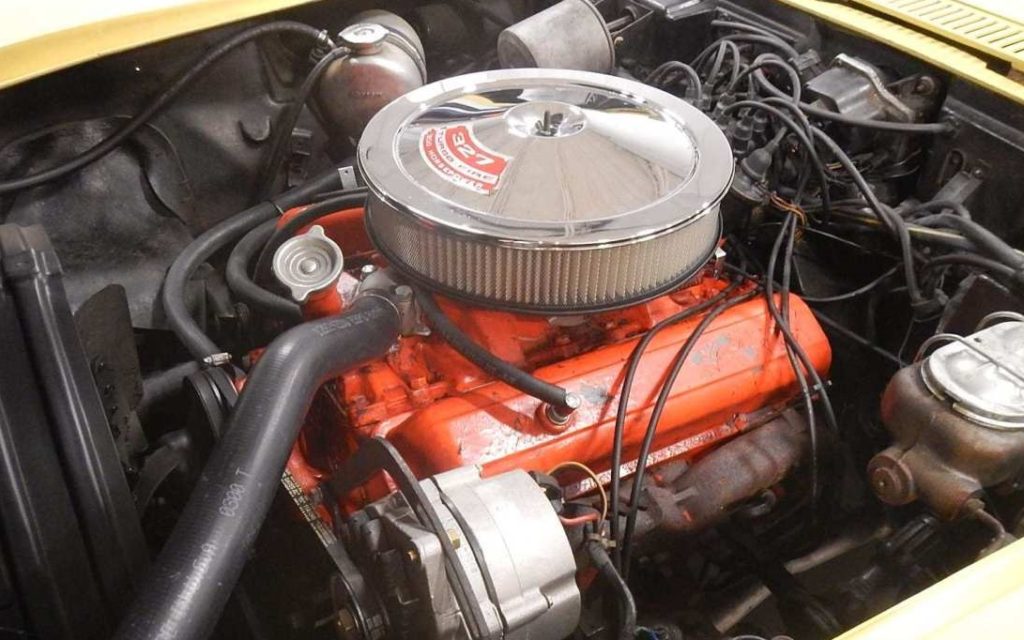
1968 Chevrolet Corvette convertible with a Base 327 cubic inch small-block V8 rated at 300 gross horsepower. This was the first year for the C3 “Coke bottle” shape body derived from the Mako Shark II concept; despite its gills, the Sting Ray name disappeared from the 1968 C3 and reappeared as Stingray on the 1969 C3. Photo courtesy of Corvette Mike Midwest
Last Breach of Air
After a public relations assignment and medical attention had removed him from leading C3 development for a good portion of 1967, Duntov was summoned back to Corvette as Head Engineer.[7] He immediately set off to rescue his sports car sweetheart. However when Duntov arrived, she was dancing herself through heat exhaustion and excessive body flex due to the C3 wardrobe change.[8]
Again a savior, Duntov quickly stabilized the ’68 Corvette’s condition. And for 1969 the new Vette’s stellar performance was as timeless and temporal as Jimi Hendrix’s Star-Spangled Stratocast at Woodstock that very same year.[9]
Duntov’s creativity and inspirational leadership could only do so much to offset Washington’s tightening grip though. Indeed, California’s next idea was regulation of “pass-by” noise in 1970.[10] But more critically, the EPA announced a tremendous crescendo in pollution controls that year with the Clean Air Act.
We already covered the hidden melodies of Corvette’s 1969 engine menu with the solid lifter ZL1 & L88 – in ‘Corvette Power from C1 – C8, Part 3‘ – but we did not mention the magnificent small-block that failed to make the stage in 1969, the LT1.[11] Although it appeared in 1970, a year later than planned, the LT1 would be Corvette’s only available solid lifter engine in 1970 and 1972.[12] Keeping a taught tapping tempo, the high-revving small-block’s horsepower rating would drop from 370 ‘gross’ to 255 ‘net’ during that time.
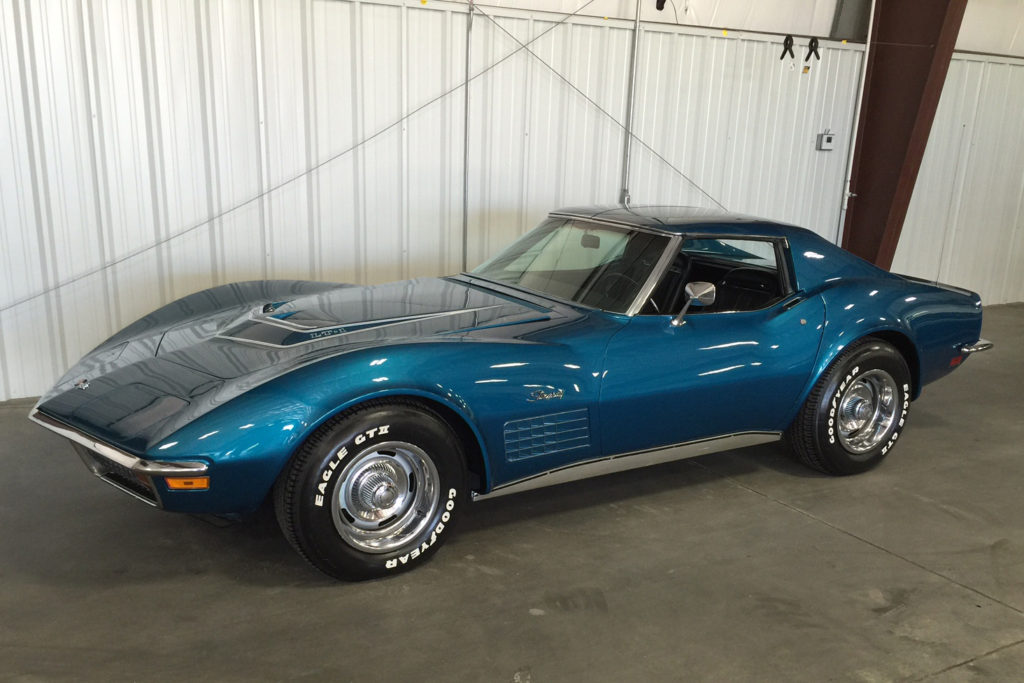
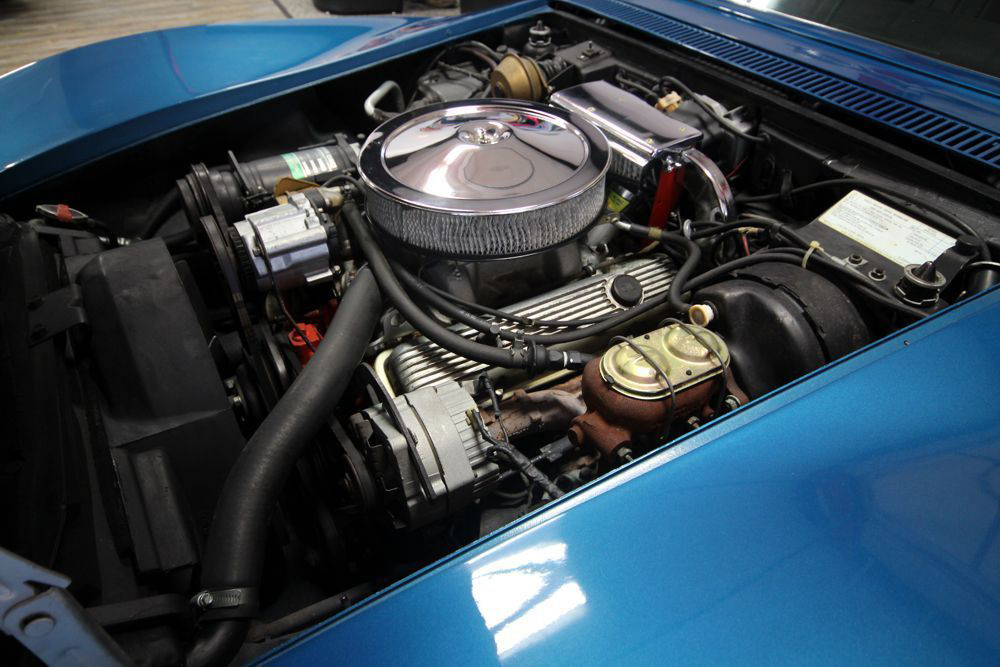
Pics 1 & 2: 1972 Chevrolet Corvette with 350 cubic inch LT1 small-block V8 rated at 255 net horsepower. This was the last year for front chrome bumpers. In addition, the 1972 LT1 was the last solid lifter engine available; it was discontinued due to “pass-by” noise legislation. The track focused ZR1 Corvettes and Z28 Camaros were powered by the original LT1. Photo courtesy of Barrett-Jackson Auction Company
1970’s the Clean Air Act called for a dramatic 90% reduction in carbon emissions by the 1975 model year.[13] R&D engineers who had been tasked with boosting an engine’s respiration at high RPMs in the mid-sixties – sometimes in support of privateer racing teams – found themselves on a moon shot for emissions savings.[14] By 1972 – when Congress mandated front and rear 5 mph impact bumpers for 1974 – most remaining lees of performance engineering had to be repurposed to address the imminent regulations.
But on the bright side, new US vehicles in 1974 could withstand a 5-mph collision – instead of the previously proscribed 2.5 mph resistance – unscathed. Hopefully Mr. Nader took note that vehicles were in fact safe at some speeds now. In addition, they were also quiter as the Noise Control Act of 1972 echoed the motor vehicle noise limits sounded by California in 1970. Corvette’s second Chief Engineer – Dave McLellan, taking the helm in ’75 – blamed these noise laws for the disappearance of the last solid-lifter engine (the LT1) from the 1973 options list.[15]
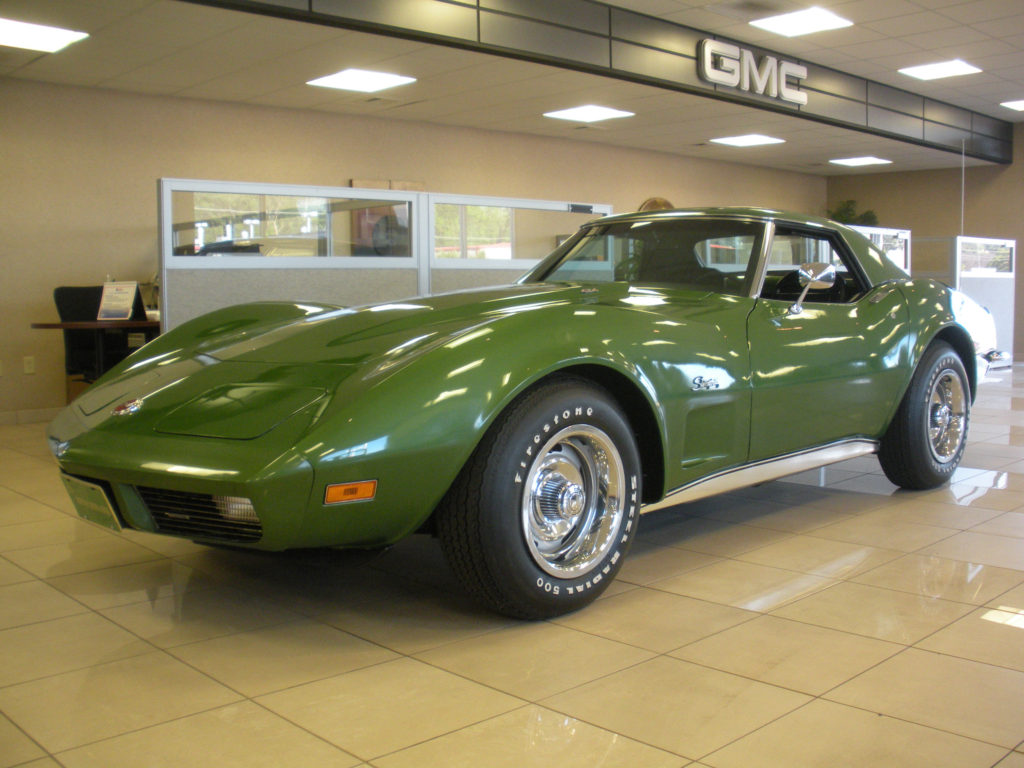

Pics 1 & 2: 1973 Chevrolet Corvette hardtop convertible with a 454 cubic inch LS4 big-block V8 rated at 275 net horsepower. Note the body color 5-mph front bumper and chrome 2.5 mph rear bumper specific to 1973; both bumpers were 5-mph starting in 1974, eliminating the chrome rear. Photo courtesy of Barrett-Jackson Auction Company
In 1974, under pressure from desperate auto manufacturers, the EPA postponed its 90% carbon reduction target until 1977. Still, many 1975 model-year cars – such as the Corvette – had catalytic converters. In fact, broad compliance with emission and safety regulation actually began to have its desired effect. The chart below shows that carbon-monoxide emissions tonnage (dotted line) and vehicle fatalities (red line) – both as ‘per mile driven’ – had actually dropped by about 20% from 1960 to 1973.
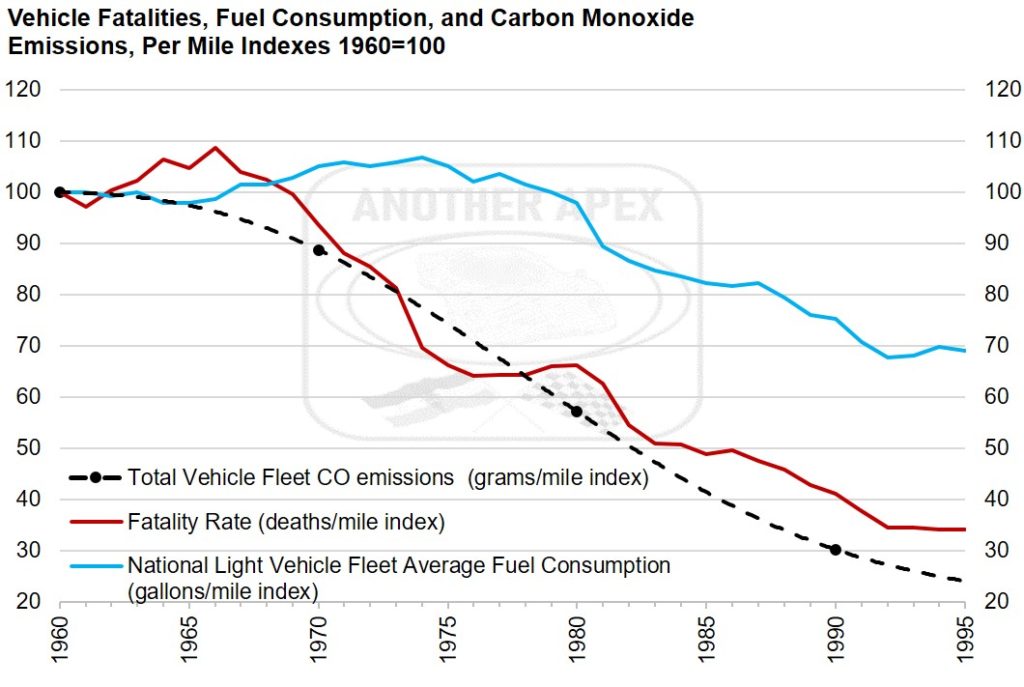
“Light Vehicles” have wheelbases less than 121″ according to NHSTA; Actual emissions data – in black – includes light and heavy trucks while emissions requirements showed for passenger cars only; CO was one of the many harmful emission compounds where the EPA set targets
From NHSTA, EPA, EIA, and Another Apex estimates
Empty Oil Lamps are for Polishing
However, a new problem reared its head during 1973. Americans still had a taste for heavy vehicles and those heavy vehicles had quite a thirst for fuel. And despite their public health benefits, the new safety and emissions standards didn’t address poor fuel economy at all. In fact, the weight of new components likely increased fuel consumption.
Indeed, in 1973 the US Light Vehicle fleet consumed 6% more fuel per mile (blue in above chart) than in 1960. And unfortunately, starting in 1973 the country was facing years of oil shortage, recession, and inflation.
In our next post we’ll highlight how America’s sudden energy focus further thickened the slurry of regulation proscribed in the late 70s and early 80s. And we’ll look at how that impacted the aging C3 Corvette.
Written by Jez Stephens
[1] “In 1960, California’s legislature enacted the Motor Vehicle Pollution Control Act (MVPCA). The MVPCA established the Motor Vehicle Pollution Control Board (MVPCB) within the Department of Public Health, and authorized the MVPCB to, among other specified duties, ‘determine and publish criteria for approval of motor vehicle pollution control devices. https://www.edf.org/sites/default/files/CARB_Detailed_Comments_on_SAFE_NPRM.pdf accessed 5-28-2019
[2] A Brief History of Technology-Forcing Motor Vehicle Regulations, Paul Miller and Matt Solomon, awma.org 2009 http://citeseerx.ist.psu.edu/viewdoc/download?doi=10.1.1.608.4763&rep=rep1&type=pdf accessed 5/30/2019
[3] Analysis in Support of Comments of the California Air Resources Board on the Safer Affordable Fuel-Efficient (SAFE) Vehicles Rule for Model Years 2021-2026 Passenger Cars and Light Trucks, pg27, ww2.arb.ca.gov
[4] A Brief History of Technology-Forcing Motor Vehicle Regulations, Paul Miller and Matt Solomon, awma.org 2009 http://citeseerx.ist.psu.edu/viewdoc/download?doi=10.1.1.608.4763&rep=rep1&type=pdf accessed 5/30/2019
[5] Zora Arkus-Dontov by Jerry Burton, published by Bentley 2002, pages 316 & 321
[6] “Both a positive crankcase ventilation system and a device to purify the exhaust were needed to register a new car in 1968.” Corvette Racing, David Kimble, Motorbooks, 2012, page 102
[7] Corvette Racing, by David Kimble, Motorbooks 2012, page 99
[8] C3 big block overheating problems –and– strengthening of the chassis to accommodate a 10-25% widening of wheels in ’68 and ’69, Corvette Racing, by David Kimble, Motorbooks 2012, pages 99 and 108
[9] Jimi Hendrix passed away about one year after his performance at Woodstock, David Fricke https://www.rollingstone.com/music/music-features/jimi-hendrix-the-man-and-the-music-197412/ accessed 8/6/2019
[10] 1970 California Vehicle Code 23130 establishes noise limits for motor vehicles
[11] The Complete Book of Corvette, Every Model Since 1953, Mike Mueller, 2006, page 154
[12] 1971 had the big-block LS6 Corvette Power from C1 – C8, Part 3
[13] John Bachmann et al, http://www.epaalumni.org/hcp/air.pdf accessed 2-1-2019
[14] Paul Van Valkenburgh, Chevrolet = Racing?, Walter R. Haussner and Associates, Inc. 1972, page 259
[15] Dave McClellan, Corvette from the Inside, Bentley, 2002 page 70


